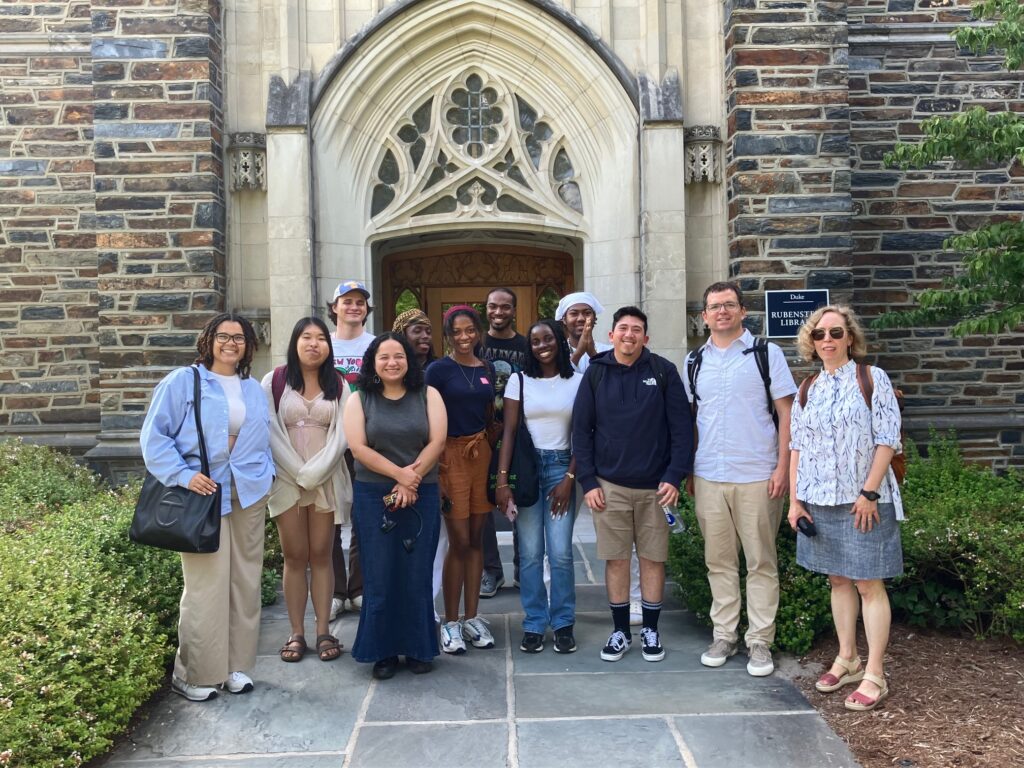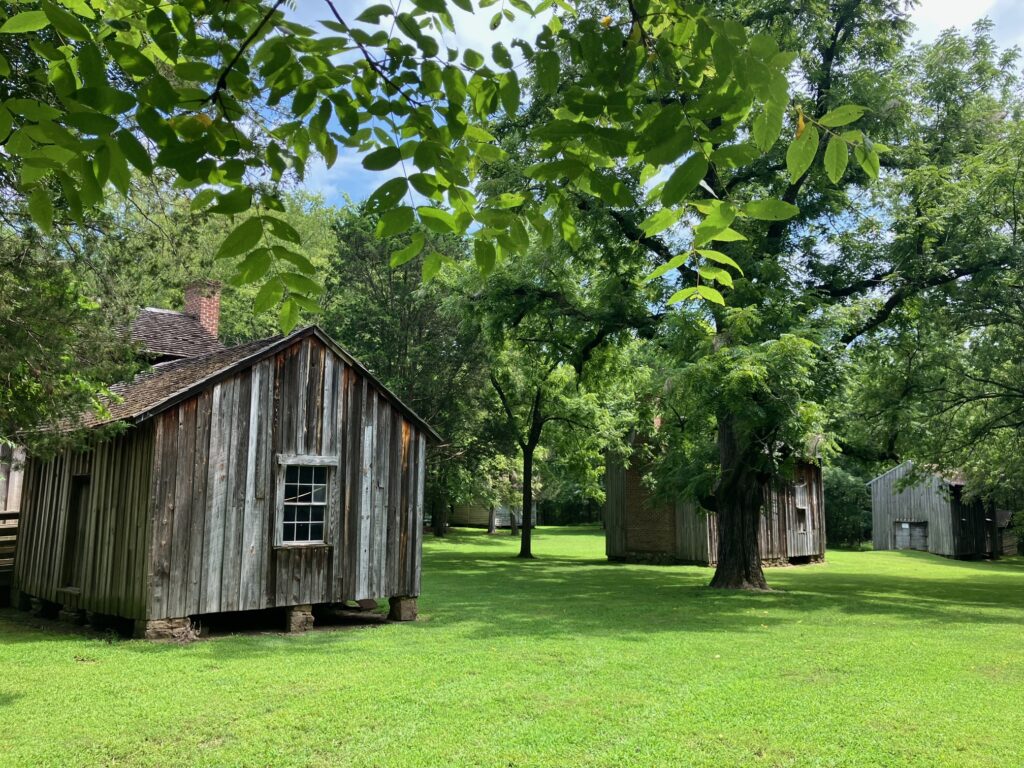New internship program gives UC Santa Cruz and HBCU students a hands-on look at the lives of enslaved peoples in 19th century America
The students’ work added to the historical record, helping future scholars understand the workings of the slave trade. Merchants involved in the slave trade meticulously recorded details about the slaves in their holds, treating them as mere ‘goods.’ These records, though chilling in their intent, have become invaluable to historians.
September 24, 2024
By Dan White
Ten hard-working student researchers spent their summer poring over the yellowed pages of old ship manifests and reading 200-year-old letters by merchants describing slave-trading voyages.
In the process, this group, consisting of five University of California, Santa Cruz students and five students from Historically Black Colleges and Universities, uncovered rare glimpses of enslaved people’s lives in America. Of the HBCU students, four were from Howard University in Washington, D.C., and one was from Xavier University in New Orleans.

This cohort spent part of their time compiling entries by hand and contributing them to the Intra-American Slave Trade Database, hosted on the website SlaveVoyages.org.
The students delved into the historical intricacies of the slave trade, while adding to the historical record, helping future scholars understand the workings of the slave trade and how it developed and spread through the United States.
“The UCSC and HBCU students participated equally in the whole project,” said UC Santa Cruz History Professor Greg O’Malley, who has been a key figure in the creation and expansion of this database, which now has 36,000 entries. “The UC-HBCU Initiative is an important diversity program funded by the UC Office of the President, which gave me the grant to include the five undergraduate students from Historically Black Colleges and Universities in the program.”
The database, which is accessible to the public, went live in 2019. Each entry represents a voyage of a ship transporting enslaved people within the Americas, including details such as embarkation and disembarkation ports, the number of people who boarded and disembarked, and mortality on board.
O’Malley, who leads the internship program, is a principle investigator of the Intra-American Slave Trade Database project housed at The Humanities institute at UC Santa Cruz. He is also the author of Final Passages: The Intercolonial Slave Trade of British America, 1619-1807(University of North Carolina Press, 2014).
Old ship manifests and port records relating to the transportation of enslaved people rarely go into details about the voyages, but their precision and reliability makes them good sources of information for historians.
“A complete entry lists how many enslaved people boarded the vessel, how many got off, and how many died in the appalling conditions on the ship,” O’Malley said.
“For the most part these aren’t detailed records, but if you aggregate enough of them, you start to see patterns of where enslaved people were coming from and going to through time,” O’Malley said. “In this way you can see the spread of the institution of slavery, which has huge implications both culturally and economically.”

“Coming to terms with the dehumanizing nature of American chattel slavery provided me with a better understanding of how this system relied on the culturally constructed idea of race to completely dominate the African people,” said Timothy Brown, a Howard University sophomore majoring in Afro-American Studies. He is a member of the inaugural cohort of the Humanities and Social Sciences Program at Howard, and a Mellon Mays Undergraduate Fellow.
“Through my research this summer, I recognized and honored the lived experiences of enslaved Africans who were labeled subhuman,” Brown said. “This proved to be essential to reconnecting with the humanity of my ancestors as well as my own.”
The UC Santa Cruz group included two history majors, a classics major, and a marine biology major who had also completed relevant coursework in Critical Race and Ethnic Studies. Each student received a $4,000 stipend and paid travel to the research sites in California and North Carolina.
This group-based internship program is new. In the past, individual students worked ad hoc on research projects with O’Malley. By training a cohort of students simultaneously, the program aims to maximize the impact of their work and provide a more comprehensive understanding of the historical sources, O’Malley said. The Humanities Institute co-sponsored and managed the logistics of this unique research internship.
The students’ research journey began with three weeks at UC Santa Cruz, where they focused on digitized sources from the National Archives.
Their work centered on digitized versions of 19th-century ship manifests, essential for understanding the movement of slaves within the United States after the international slave trade was abolished in 1808.
O’Malley explained that merchants involved in the slave trade meticulously recorded details about the slaves in their holds, treating them as mere ‘goods.’ These records, though chilling in their intent, have become invaluable to historians.
“We can now document the movements of enslaved people much more systematically than we can document the movements of free people precisely because they were being moved for mercantile purposes,” O’Malley said. “This creates a paper trail … They don’t report the names of free passengers on these ships, but they report the departures and arrivals of people being traded.”
Following their time in Santa Cruz, the group traveled to North Carolina for two weeks, along with another UCSC historian, Associate Professor Catherine Jones. There, they conducted hands-on research in various archives across Raleigh, Chapel Hill, and Durham, including special collections at the University of North Carolina and Duke University.
“The North Carolina portion of the program aimed to address gaps in records for arrivals of enslaved Africans in the colonial period,” O’Malley said. “The kinds of port records we relied on for other colonies are missing for North Carolina, for reasons that aren’t clear.”
Although the research yielded mixed results, with sporadic port records offering useful but incomplete data, the experience provided students with a tangible connection to the historical context of their work, O’Malley said.
Prior to this internship experience, most of the students had never been to an archive before, O’Malley said.
“It was their first time handling the original old yellowed paper. Even though they’d seen digitized archival sources before, this was different,” O’Malley continued. “They were actually holding and confronting the documents themselves. It just felt more visceral, making them think about the fact that some port official was inspecting a ship that actually had human captives on board. There was something moving, powerful, and troubling, about handling the original documents.”
“It was terrific to receive hands-on experience with the primary source documents,” said participating undergraduate Ethan Waldo (John R. Lewis, history.) He found it striking that the traders who filled out the documents acted as if transporting enslaved people was something “mundane .. Many of the inspectors, the people creating these documents, would leave entries blank or even doodle on the forms, providing insight into just how mundane this task had become to them.”
But the human cost of those documents weighed on the students who handled them.
“Each paper represented up to a hundred enslaved people being transported from family, friends, and the place they considered home,” Waldo said. “The voyages I logged carried over 600 enslaved people into the port of Mobile, Alabama, in roughly two years.”
The project was made possible by University of California Multicampus Research Programs and Initiatives, the UC-HBCU Initiative, The Humanities Institute, and by the Student Success Office at UC Santa Cruz. O’Malley hopes to bring back the internship in the future, though the specifics have yet to be determined.
Original link-https://news.ucsc.edu/2024/09/omalleyinternshipfeature.html
Learn more about the Intra-American Slave Trade Database-https://thi.ucsc.edu/projects/slave-trade-database/
